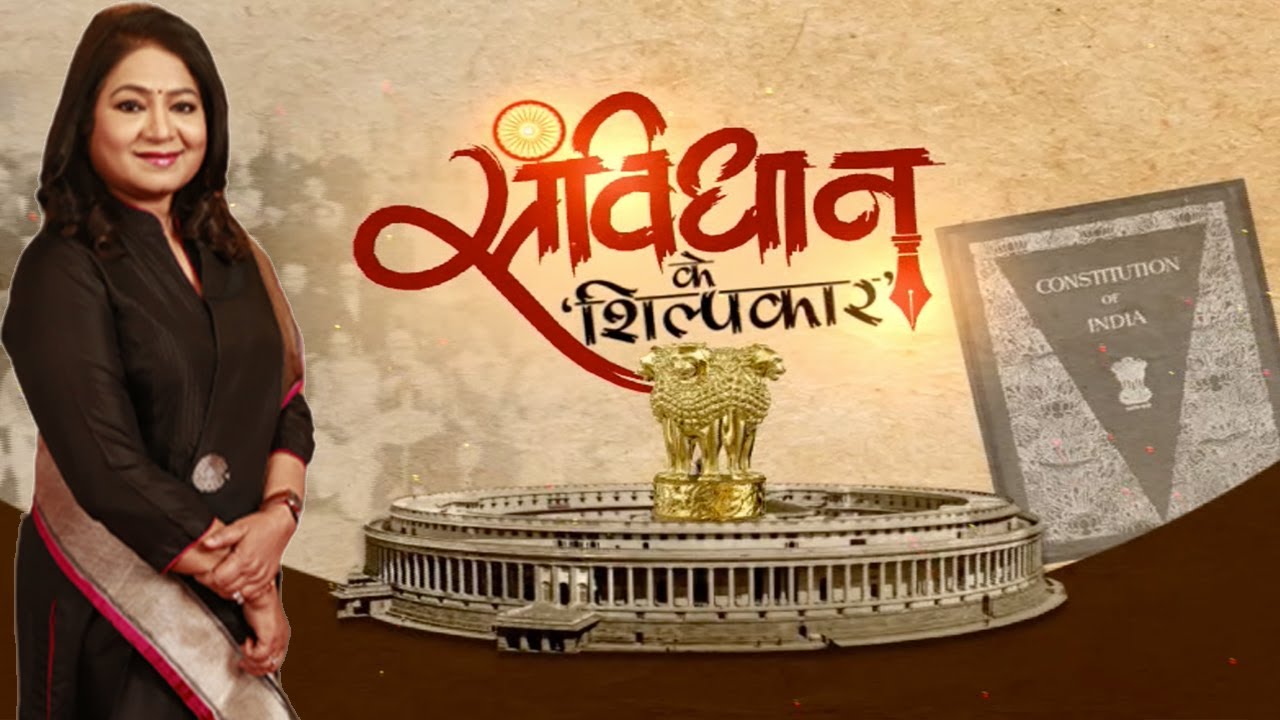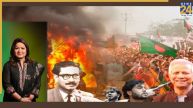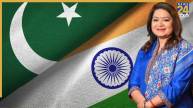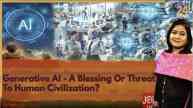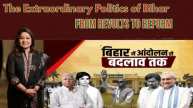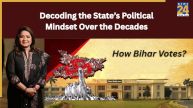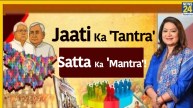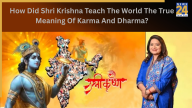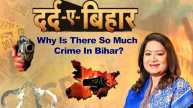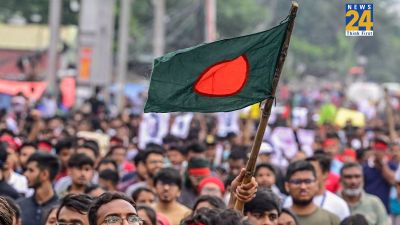The Constitution of independent India was drafted on November 26, 1949. The importance of the Constitution can be best understood by someone who appears before the Supreme Court to defend their fundamental rights and fight for their rights, often considered the most economically vulnerable in society. The strength of the Constitution lies in its power and unwavering trust. It provides a pathway for state governments and major institutions to resolve their disputes. Political parties, sitting in power, often acknowledge the role of the opposition, respecting people’s decisions.
The responsibility of determining whether the country is functioning according to the Constitution lies with the judiciary. Just as an artist creates a masterpiece on a stone with years of chiselling and hammering, the Constituent Assembly, with its nearly 300 members, envisioned a vibrant, prosperous, and successful India. Their vision was to weave the diversity of vast India into the thread of unity. Every eye wished to wipe away tears. The intention was to make India a nation where every citizen feels equally involved in its construction. Under the Cabinet Mission Plan, most members of the Constituent Assembly were educated in English. They were well-versed in the law, but they deeply understood Indian traditions and social intricacies.
There were opposing views within Congress
Whether it was Pandit Jawaharlal Nehru, Bhimrao Ambedkar, K. M. Munshi, T. T. Krishnamachari, Rajendra Prasad, or Sachchidananda Sinha. Although Congress had dominance in the Constituent Assembly, there were open dissenting voices within the Congress itself. Our forefathers sitting in the Constituent Assembly were committed to creating a document that would make independent India shine, where every dispute could be resolved based on a document that avoided suppressing any separate thought based on a majority, emphasizing practicality and logic. The issue before the Constituent Assembly was the Uniform Civil Code, often referred to as the Common Civil Code.
Welfare and progress for all
The marvel of the powers enshrined in the Indian Constitution is evident, where it sees equal opportunities for people living in the snow-covered peaks of the Himalayas and those facing the waves of the seas in South India. Regardless of language, traditions, or dietary habits, the Constitution binds everyone together. In this vast, diverse country, from the deserts of Kutch in the west to the Brahmaputra Valley in the east, people see a path of progress in the inclusive and expansive constitution of India. It took 2 years, 11 months, and 18 days to draft the Constitution. There were extensive debates on every issue in the Constituent Assembly. The goal was to pave the way for the well-being and progress of everyone in independent India.
A serious issue – Uniform Civil Code
There were several challenging issues before the Constituent Assembly that were not easy to resolve. One such serious issue was the Uniform Civil Code. The entire nation had its eyes on the Constituent Assembly’s meeting. One such issue on which there was a heated debate was the Uniform Civil Code. The proposed draft of Article 44 under Article 35 of the Constitution had reached the final debate. When the debate began, Muhammad Ismail, a member of the Constituent Assembly from Madras, stated that following one’s specific personal laws is an essential part of the lifestyle of those who believe in them. Imposing interference in the specific personal laws of people means interfering with the ways of those who have been following these laws for generations.
What did the Muslim League leader say?
The Constituent Assembly also thought that every class of society would be free to be governed by its personal laws, so there would be no clash of interests with others. The leader of the Muslim League from Madras, B. Pocker Sahib Bahadur, advanced the debate by saying that after the British won this country, they continued to rule for 150 years because they guaranteed adherence to the personal laws of various communities in this country. He questioned whether the independence we have gained for this country means that we are abandoning the freedom of conscience, the freedom of religious practices, and the freedom to follow our personal laws, and imposing a uniform civil code on the entire country.
Hussain Imam’s statement
Everyone had their own arguments and their own concerns. There was a heated debate on the Uniform Civil Code in the Constituent Assembly. While advancing the debate, Hussain Imam, who came to the Constituent Assembly to represent Bihar, attempted to explain by giving an example. If North India experiences the most cold, then South India is excessively hot. In Assam, there is the highest rainfall in the world, while in the deserts of Rajasthan, there is almost no rainfall. In such a diverse country, is it possible to bring uniformity in civil laws?
What did K. M. Munshi argue?
Many members of the Constituent Assembly strongly advocated for the Common Civil Code. One of them was K. M. Munshi, who was elected from the Bombay Province. He said in the Constituent Assembly that ultimately, we are a progressive society. Today, we are at a juncture where unity and integrity of the country are essential without interference in religious practices. Today, we need to think about which subject is related to religious faith and which is not. The purpose of the Uniform Civil Code is to establish a secular constitution in this manner.
Categorizing controversial standards
The debate on the Uniform Civil Code in the Constituent Assembly was intense. The question was how to create a civil law that is the same for all religions, castes, and communities without interference in religious practices. Considering it controversial, it was left in the category of policy directive elements for future governments (Directive Principles of State Policy). In other words, issues that the Constituent Assembly found highly controversial were left for future resolution. After a lengthy debate on November 23, 1948, the framers of the constitution concluded that upcoming governments would implement a Uniform Civil Code in the country. This means that the laws related to the way of life of every Indian would be the same.
Article 44 was approved in the constitution, but this policy directive element has not been implemented to this day. India gained independence at the cost of partition. In this context, the Constituent Assembly faced the question of whether India should become a Hindu nation when Pakistan was created in the name of a Muslim nation. On this issue as well, the discerning and tradition-conscious members of the Constituent Assembly charted a path where progress for people of all religions in India could be seen with equal opportunities.
Controversy within Congress regarding the vision of New India
In the Constituent Assembly, the Congress had a complete majority, but there was controversy within the Congress regarding the vision of the new India. Some believed that since Muslims had taken a separate nation, India should become a Hindu nation. However, a section of the Congress wanted to maintain India’s secular character. Just ten days after partition, the issue of minorities was raised in the Constituent Assembly, and everyone expressed their opinions. The Muslims of Madras demanded a separate election for themselves. B. Pokar Bahadur, addressing the Constituent Assembly, said that it is challenging to understand the needs of the Muslim community for others. If the provision for separate elections ends, the Muslim community will feel that their representation in the government is reduced, and their voice is not being heard.
Sardar Vallabhbhai Patel firmly opposed
The then Home Minister of the country, Sardar Vallabhbhai Patel, was not in favour of separate elections based on religion at any cost. He categorically stated that those who desire such a thing (separate elections based on religion) should go to Pakistan, not here. We are laying the foundation of a nation, and there is no place here for those who want to divide the country again.
In the Constituent Assembly, the demand for reservation based on religion was rejected by 5 out of 7 Muslim members. It is said that T. Shah, the then member of the Constituent Assembly, wanted to include the concept of secularism in the constitution. Shah attempted three times through amendments, but it is said that even Dr. B.R. Ambedkar was not in favour of it. The work of defining the new category for minorities started in the Constituent Assembly.
Demand for reservation rejected
The demand for reservation based on religion was rejected in the Constituent Assembly. However, the path to bring backward people into the mainstream through reservations was seen by the framers of our constitution in the case of reservations for a certain period. The Constituent Assembly decided on a 15% reservation for SC and 7.5% for ST in government educational institutions, government, and public sector jobs, and that too for ten years. A review of reservations was to take place after ten years, but leaders never made an honest effort to eliminate discrimination on the basis of caste. Instead, castes in independent India started being used as political chess pieces, and even today, they are being used.
Vigorous debate within the Constitutional Assembly
There was a heated debate on caste-based reservation within the Constitutional Assembly. The outcome of the intense debate revealed that if special rights were granted in the constitution for the backward classes, along with the Scheduled Castes, for a period of 10 years, then these backward classes would catch up with the rest of society after centuries. In this context, Professor K.T. Shah argued that if there were no reservations in jobs, officers would discriminate according to their preferences. Chandrika Ram, elected from Bihar and present in the Constitutional Assembly, directly targeted Seth Damodar Swarup, a member of the assembly, regarding the proposal for reservation. Damodar Swarup wanted representation for all communities in the population, questioning why reservations for backward classes were being objected to in this clause, which provides for the welfare of backward classes.
Ambedkar threatened to resign
In the Constitutional Assembly, it was argued that even qualified individuals from the Scheduled Castes did not get good jobs. Discrimination based on caste is practiced against them. Leaders, including Ambedkar, raised demands for reservations in elections, jobs, and even in the cabinet. The demand was so intense that Ambedkar even threatened to resign from the position of Law Minister. Ambedkar argued that as far as the Scheduled Castes are concerned, other minority communities have been enjoying benefits for a long time. Muslims have been benefiting since 1892, and Christians have had privileges since 1920. Scheduled Castes have only been receiving benefits since 1937. Therefore, they should be given benefits for a longer period, but since the reservation proposal has already been passed for 10 years, I accept it. However, the option to extend it should always be there.
How to conduct free and fair elections?
In this context, the Constitutional Assembly agreed to reservations for Scheduled Castes and tribes for a specified period. Vote bank politics has always seen advantages in maintaining reservations. A significant issue before the Constitutional Assembly was how to ensure free and fair elections in independent India. The structure of elections had already begun during the British era, but it was limited. To transform the strong republic into a successful democracy, there was a thorough debate within the Constitutional Assembly on conducting free and impartial elections.
Election Commission for states and union territories
Between the intense heat of Delhi and the open air of independence, a serious debate took place in the Constitutional Assembly on June 15-16, 1949, where the establishment of a system was being discussed, including an election commission and chief election commissioner, to keep them free from executive pressure and influence. On June 15, 1949, Dr. Ambedkar proposed an amendment, stating that the proposed article had a provision that there should be a commission for both houses of the central legislature and a separate election commission for each state and union territory to be appointed by the governor or president. However, in the amended proposal, it was suggested that the work of elections should be in the hands of a single commission, assisted by assistant regional commissioners.
Appointment of the Chief Election Commissioner
Several arguments were presented to introduce this amendment proposal. Some Constitutional Assembly members, like Pandit Hriday Nath Kunzru, did not agree with Dr. Ambedkar’s arguments. Professor Shiban Lal Saxena was not in favour of giving the President the right to appoint the Election Commissioner. It was also suggested that the appointment of the Chief Election Commissioner should be made by a two-thirds majority of both houses of Parliament. After a lengthy debate in the Constitutional Assembly, it was decided that the Election Commission should be kept independent and impartial in such a way that no ruling party could influence it, and it would not affect officers in key positions.
The Constitutional Assembly strongly endorsed the idea of a free and impartial Election Commission for the success of Indian democracy. On January 26, 1950, when India became the world’s largest republic, the Election Commission played a crucial role in making India the most outspoken democracy in the world. The continuous cycle of elections has strengthened Indian democracy over the years. Today, Indian democracy stands as an exemplary model in the world. A widely accepted saying in India is, “Language changes every few kilometres; every four kilometres, the dialect changes.” This means that language changes every four kilometres. The language of the people of Kashmir is different from that of Uttar Pradesh and Bihar. There is no common language between the western and eastern dialects. Christians have been enjoying facilities since 1920. Scheduled castes have only been receiving benefits since 1937. Therefore, they should be given facilities for a longer period. However, I accept the proposal for reservations for 10 years at a time, although the option to extend it should always remain.
Heated debate in the constituent assembly
In the Constituent Assembly, a heated debate ensued. Most members of the Constituent Assembly were proficient in speaking, reading, and writing English. This raised the question of what should be the national language of India. A significant uproar occurred in the Constituent Assembly over the issue of granting Hindi language and the Devanagari script the status of the national language. The language spoken and understood by about half the people of India would be the official language, according to the proposal. The most vigorous advocacy for making this language the national language took place in the Constituent Assembly, and opposition also emerged there. Many members of the Constituent Assembly were English speakers, including Gopal Swami Ayyangar, who clearly stated that English would need to be retained for several years. He argued that English had deeply penetrated everything, from courts to government work.
C. Rajagopalachari was also advocating for English, while leaders from the southern states took a different stance. They opposed English but were not willing to accept Hindi. A debate was ongoing regarding Hindi and Hindustani. Both languages have some differences. Hindi has a strong influence from Sanskrit, while Hindustani is a language used by people that incorporates common words from Sanskrit, Arabic, and Persian, reflecting the linguistic diversity of the region.
What argument did R. V. Dhulekar put forward?
When R. V. Dhulekar began speaking in Hindustani on December 10, 1946, upon reaching the Constituent Assembly from the United Provinces, objections were raised. In response, he retorted in a somewhat stern manner, “Those who do not know Hindustani have no right to stay in Hindustan. People who have come here to make the constitution of India and do not know Hindustani are not fit to be members of this assembly. It is better for them to leave.” Dhulekar’s statement created a commotion in the Constituent Assembly. Despite calls from the chair to maintain order, he continued speaking. The debate continued persistently.
The most compelling arguments in favour of Hindi were presented by leaders such as Purushottam Tandon, Seth Govind Das, Dr. Raghuvir, while Abdul Kalam Azad presented arguments in favour of Hindustani. Various formulas regarding language were being discussed amidst the ongoing debate. Some argued for keeping English for ten years, while others proposed fifteen years. Southern leaders had their say. T. T. Krishnamachari, among them, expressed that they initially disliked English. Personally, he had no interest in reading Shakespeare and Milton, but now, at his age, he couldn’t be forced to learn Hindi.
Hindi became the national language
On July 14, 1947, a proposal came to the Constituent Assembly to declare Hindi as the country’s language instead of Hindustani. Some members were in favour of Hindi, while others were in favour of Hindustani. When a consensus could not be reached, a vote was taken. Hindi prevailed heavily over Hindustani. The decision was made to make Hindi the official language written in the Devanagari script. However, even today, the retirement of English from government work has not been realized. The issue of making Hindi the national language often resurfaces.
India receives its Constitution
After heated debates and controversies, India finally received its constitution on January 26, 1950, which sees every citizen of India as equal, and the law looks at everyone through the same lens. Fundamental rights have been granted to all citizens to live a dignified life. To ensure whether the Constitution is being followed correctly or not, there is an impartial judiciary. Amendments have also been made to the Constitution from time to time. In 1976, through the 42nd Amendment, socialism, secularism, and the unity and integrity of the nation were added to the preamble of the Constitution. The Supreme Court has consistently tried to resolve controversial issues through its judgments.
India’s constitution is so liberal, vast, inclusive, and dynamic that over time, it continues to be a source of strength and guidance for the people of India. The power lies in the hands of the people, institutions, political parties, and the social fabric of the country. This is why every ruling party has made an honest effort to keep the Constitution relevant over time. If anyone ever attempted to deviate slightly, the Supreme Court wasted no time in showing them their reflection.

